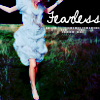Explain, in 750 to 1000 words, how and why postmodern media plays with the verisimilitude of a text
Postmodern Media is a form of media in which could be a variety of platforms; television shows or film. It contains various elements such as playfulness of a text, intertextuality and the use of parody (the latter maybe the most well known within a postmodern text). Postmodernism is almost the binary opposite of Verisimilitude which shows a representation of truth or reality. Postmodern media plays with truth and reality in many ways, and this can be seen through both media platforms of the Television and Film, in which the mediums alters or parodies reality and texts in which the audience are aware.
This notion of postmodernism shares a symbiotic relationship with the communication theory or ‘Chandlers Model’. Compromised of three different aspects of readership – The Audience, the Production and the Referent, we can see how each goes hand in hand with the other. For example, the audience watches a production, and the production is made for the audience.
In terms of post-modernism, the Production is what alters the truth or reality for the audience through referring to things that the audience recognises or believes in and this is then twisted . An example of this is through parody eg famous historical figures seen in ‘Futurama’ with their heads in jars. We know that these figures are either dead or alive in today’s society and that their heads in jars do not exist. This then creates humour and is often used to mock Presidents of America. This is also very playful – and so the merging of post-modern elements is a successful way in which Post-Modernism plays with verisimilitude. In terms of television, some of the most arguable Postmodern directors include Matt Groening (The Simpsons, Futurama) or Seth MacFarlane (Family Guy) are both writers within Fox (as a larger institution then the directors). It is highly regarded (and debated) that these are some of the most postmodern writers of our age and through their series we gain a flavour of Postmodernism within the television. In many respects, these are more relatable, or in postmodern terms Self-Referential, to an audience as they focus more on family life and then using parody and pastiche to exaggerate the life of those represented within the series, such as “The Simpsons” which have had parodies and guest appearances of a huge variety of cast; Mary Poppins, Mufasa, Michael Jackson and Britney Spears. This shows a varied range of
representations and these are usually over-dramatised like the characters within the series and are a lot larger then life.
Another aspect of Post-Modernism is the breaking of the fourth wall, in which the characters within the television series ‘reach out’ to the audience – and this creates a sense of ‘Hyper-Reality’. Hyper reality is a reality within reality; very much like the Disney Parks – MGM studies creates an atmosphere of film sets and their Design process through their rides, Epcot allows one to travel from the United States to Italy, Morocco, Canada and more, whilst Magic Kingdom allows one to go through mini-kingdoms and explore the various different realms of the Disney movies such as the house of Minnie and Mickey Mouse. This shows how difficult it can be to distinguish what is real or fiction and thus creating a sense of Hyper-Reality. In terms of media and the breaking of the forth wall, it becomes ‘difficult’ as a member of the audience to distinguish what is real or not, because they are talking directly to the audience and then creating a fragmentation within the series. This then is altering our form of reality or verisimilitude. Postmodernism plays with verisimilitude in this way for that very purpose.
Postmodern texts are usually (but not always) very comical and this is for a variety of reasons. Firstly, it sets them apart from usual texts and setting stories in average locations and situations in which we are familiar, such as the workplace (as seen in “The Office” or the “IT Crowd”) and through adding comedy to these (which give connotations of a dull working atmosphere or workaholics) spices up the typical representation in which non postmodern texts represents, and so this alienates the audience and thus creates a false sense of verisimilitude or a postmodern feeling. This notion is then affected by the playfulness of a text and enhanced through the idea of Nihilism in which contrasts to the playfulness of a text. This idea of lack of faith is also very unfamiliar to typical texts and a contemporary audience who are used to a strict narrative and the happily ever after which is present in Postmodern texts. This Nihilism also creates playfulness because of how different it is in context with the medium itself. For example, Homer Simpson in “The Simpsons” is quite Nihilistic through others have little faith in him because of his personality, and thus leads him into hilarious situations, showing as an example how Nihilism can affect the relationship between itself and the playfulness of a text.
To conclude, we can see how postmodernism affects the verisimilitude of a text and plays with it to differentiate itself from normal texts. It uses typical postmodern conventions to create this new motion and through the key ideas of self-referentialism and hyper-reality affects the idea of Verisimilitude even more so. What seems to make the playing with truth and reality even more so is the more exaggurated representation of normality through their texts and using it to exploit reality to represent it in a more fashionable and desirable light.
917 words!

No comments:
Post a Comment